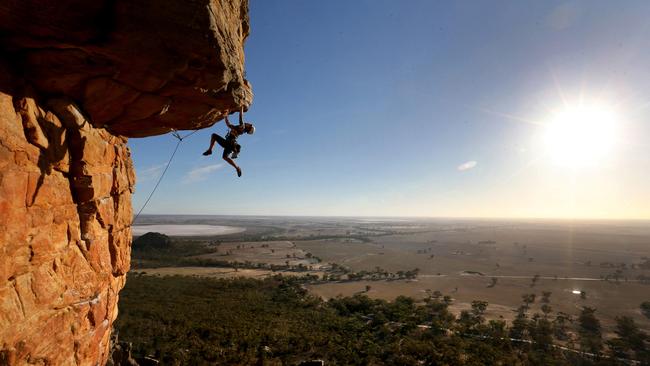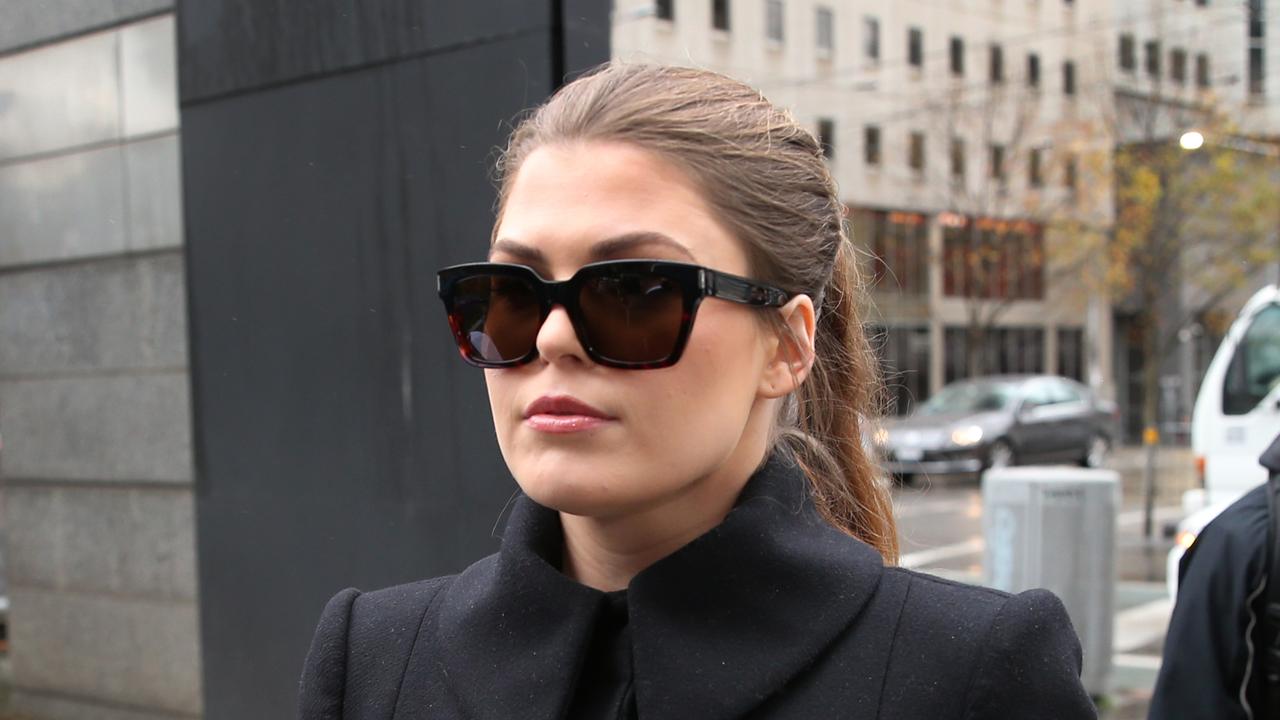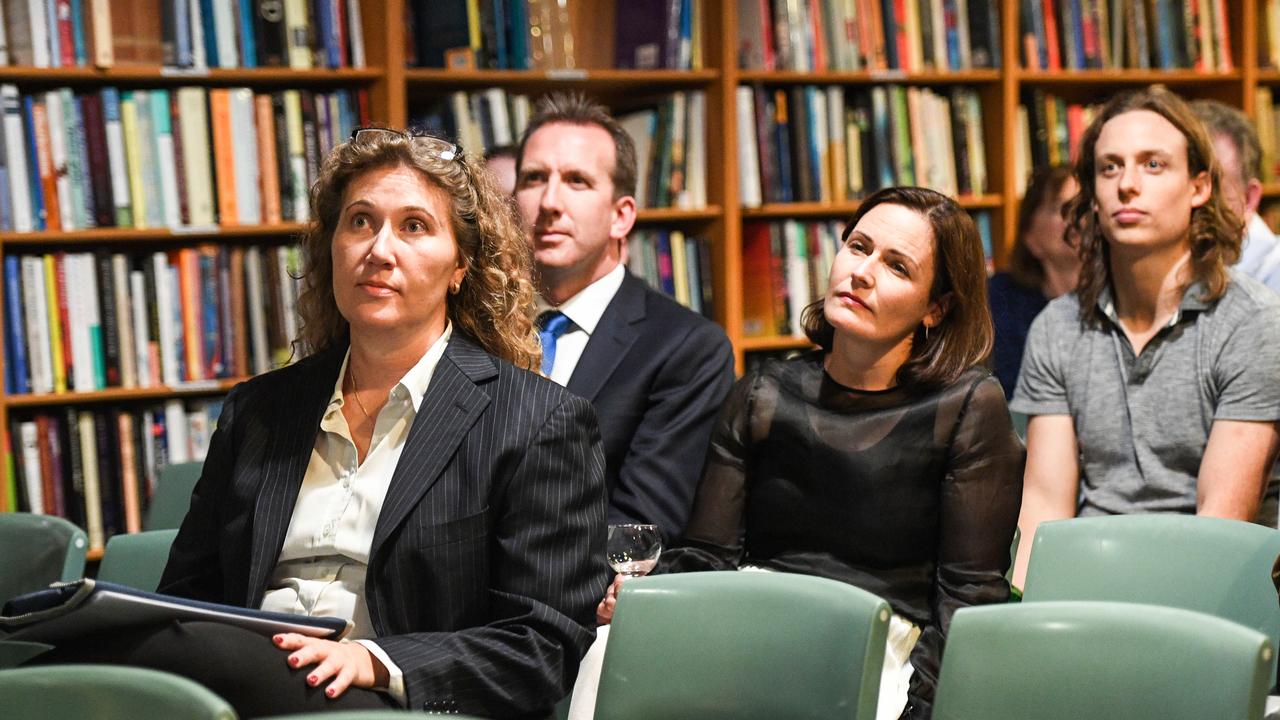For five years Parks Victoria has deliberately gutted rock climbing in a secretive, damaging agenda
Australia’s biggest land access issue lies in a small state park in country Victoria, but we are not allowed to see the cultural heritage evidence shutting part of it down.

Steve Dimopoulos is hardly a household name but he sits at the heart of the national debate about public access to sensitive Indigenous locations.
In this case, the Victorian Environment Minister had the task of convincing the country his government’s cuts to rock climbing at the world famous Mount Arapiles were only a flesh wound.
In fact, his government has cut the nation’s climbing arms and legs off, as traditional owners are given greater control over revered, open access space.
In this week’s case it’s Mount Arapiles in northwestern Victoria, a three-and-a-half-hour drive from Melbourne, but a location to which people fly regularly from around the globe to climb its 2000 or so routes that leap out above the Wimmera Plains.
Arapiles has its own beauty. The surrounding plains are in the same area that captivated the late modernist painter Sidney Nolan during World War II when he was stationed at nearby Dimboola.
Arapiles also has enormous meaning for the local Indigenous groups, some whose forebears were sent to the Ebenezer Mission at the same town Nolan was based in, although the mission closed in the late 1800s.
Dimopolous this week bravely stuck his head up to talk about the gutting of recreation at Arapiles, a site that has mythical status among climbers. Many of the best climbs have been closed down and are among the 1000 or so world-class routes that have been axed.
For five years, Parks Victoria has embarked on a process of stripping out climbing routes at Arapiles and the nearby Grampians National Park as part of a deal with traditional owners, angry at the impact of chalk and bolts used for safety, among other things.
While the Grampians bans took hold in the pandemic when no one was outside, the government has been rocked by the size of the backlash this time against its plans at Arapiles, also known as Dyurrite.
Parks Victoria and the state government are well known for having trouble with the facts on these issues.
In the Grampians, the Parks Victoria narrative was bolstered by a series of legally unverifiable, anti-climbing claims that included the false assertion that a climbing bolt had been put through art. In fact, it was past government workers who had desecrated the site.
Parks Victoria claimed in briefing papers that climbers were behind the chainsawing of trees, creation of off-piste fireplaces and other damage that lacked evidence of who had actually done it.
There also were hotly contested claims of graffiti vandalism having been done by climbers.
The most likely culprits were bored, inebriated young men from the nearby provincial city of Horsham.
My favourite, a streak of bird dung was produced as alleged climber harm in a sacred location.
Now climbers have had to listen to Dimopolous detailing a series of errors on the ABC that make you wonder whether the bloke has much of an idea what he was talking about.
On ABC Radio on Monday, Dimopolous was bravely sticking up his head, struggling to correctly pronounce Mount Arapiles. It’s A-rap-alees, Steve.
“This is Australia’s most spectacular rock formations, right here,’’ the minister spruiked.
The Blue Mountains, Kimberley and Uluru might have something to say about that.
“Over 90 per cent of all rock art in Victoria is in this landscape,’’ he went on.
Well, no. In fact, the overwhelming majority of the art is in the nearby Grampians, which are 63km away at its closest point and 109km if you count Halls Gap as the park’s population epicentre.
What harm is being done to Arapiles?
“Look, a fair bit. Literally pitons (small metal climbing tools) and bolts, chalk and graffiti,’’ he uttered.
“Not just the rock climbers but just general users of the park.
“Imagine going to the pyramids of Egypt and imagine just putting a bolt in the pyramids. Like, it’s completely unacceptable.’’
The bolts are there, by the way, to save lives, dwarfed in their impact by the metal telecommunications towers atop Arapiles.
As far as I can tell, there is no verifiable evidence of graffiti damage by climbers at Arapiles, who tend to be environmentalists who have protected the landscape rather than deliberately harmed it.
This is not to say there isn’t action that can be done to improve the look of things. No one wants art or heritage to be damaged but it’s hard to damage rock chips.
In the case of Arapiles, sorry Steve, but there seems to be very little rock art.
According to the government, Arapiles is home to one of the world’s biggest stone manufacturing sites.
“The production site, which extends for around 200m around the base of a rock face, is where traditional owners – the Jadawadjali, part of the Wotjobaluk Nations – manufactured a variety of tools from stone sourced all over Dyurrite (Mount Arapiles),’’ Parks Victoria spruiked in 2020.
“These included sharp-edged knives and spear-heads for cutting and hunting, and flat stones for grinding foods or crushing materials, such as to make pigments for painting.’’
In four years, the site has become something of potential national significance to one of the biggest in the world.
Do we believe Steve, who thinks it’s one of the biggest in the world?
I really don’t know and few ever will, with parks claiming tens of thousands of artefacts at Arapiles. But a thousand shells in a midden is still a thousand artefacts, whether or not they are high-value specimens of cultural heritage.
Under the secretive process of ratifying cultural heritage, the findings and the processes are confidential and will probably remain so. At least until there is a Coalition government in Victoria.
Dimopolous is so across the issue that in the same ABC interview he mistakenly called one of the peak groups Rock Climbing Victoria. It’s Climbing Victoria. It sounds like a small point but you have to wonder about the quality of his briefing papers.
He met with Climbing Victoria this week and the delegation left feeling they had been heard.
Which really is a giant leap forward, given that most climbers have all but been cut out of the loop, especially those who question the method and agenda of Parks Victoria.
The broad consensus has always been that cultural heritage needs to be respected, especially rock art.
In Arapiles’ case, virtually all of the art that climbers know about is either really hard to see or invisible to the naked eye. There may be just one visible artwork on the site, although we can’t say for sure because they won’t tell us.
Until the past fortnight, there has been a significant number of climbers eager to give First Nations groups a decent go. A combination of appalling community engagement by Parks Victoria, myths, maybe even lies, and a truly secretive cultural heritage assessment process has turned that on its head.
“I reckon this is a moment to celebrate, frankly, what is so special about Mount Arapiles (pronounced Arr-ripper-lees by Steve) Tooen State Park,’’ Dimopoulos said.
Another day, another Victorian bin fire.



